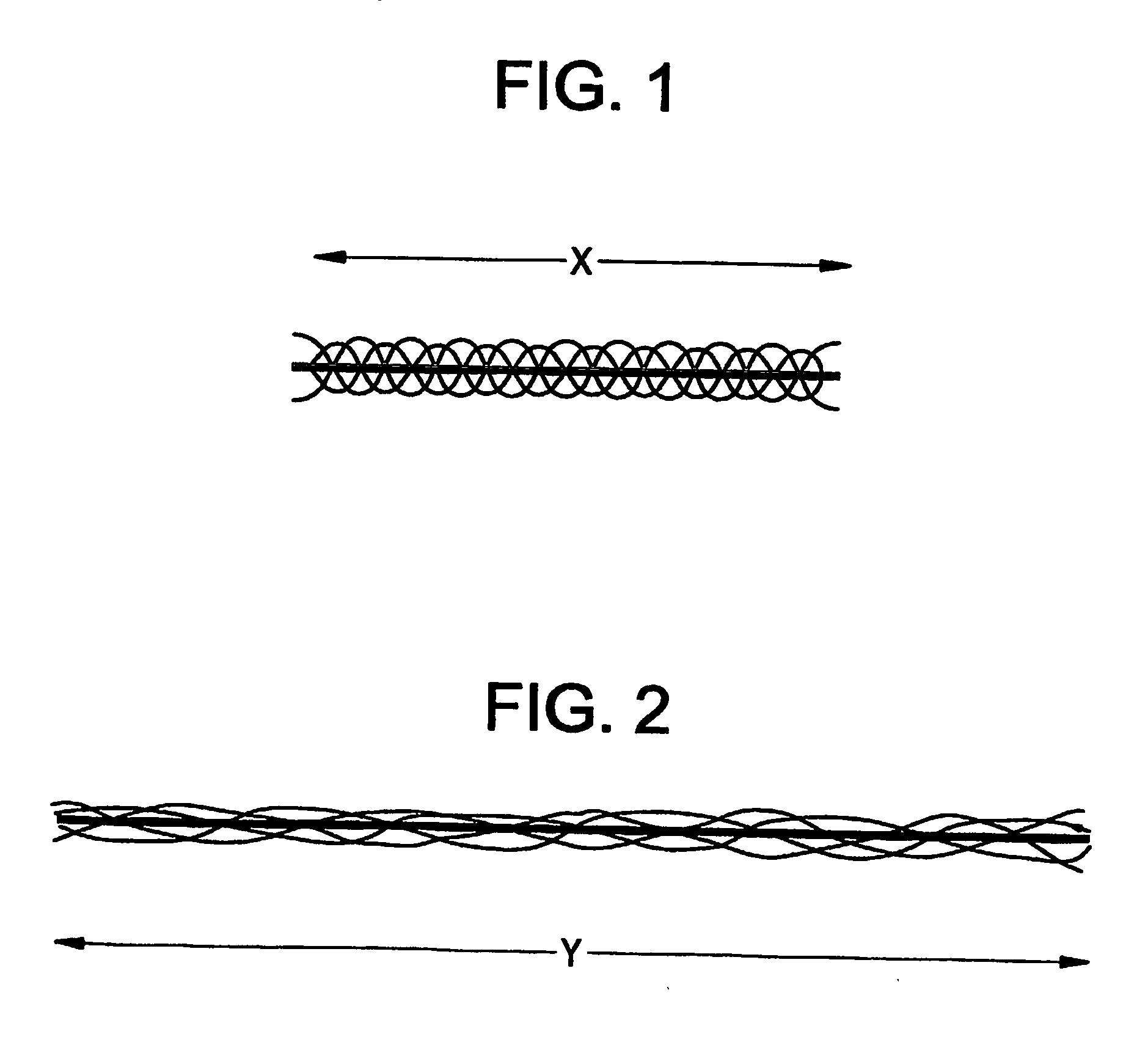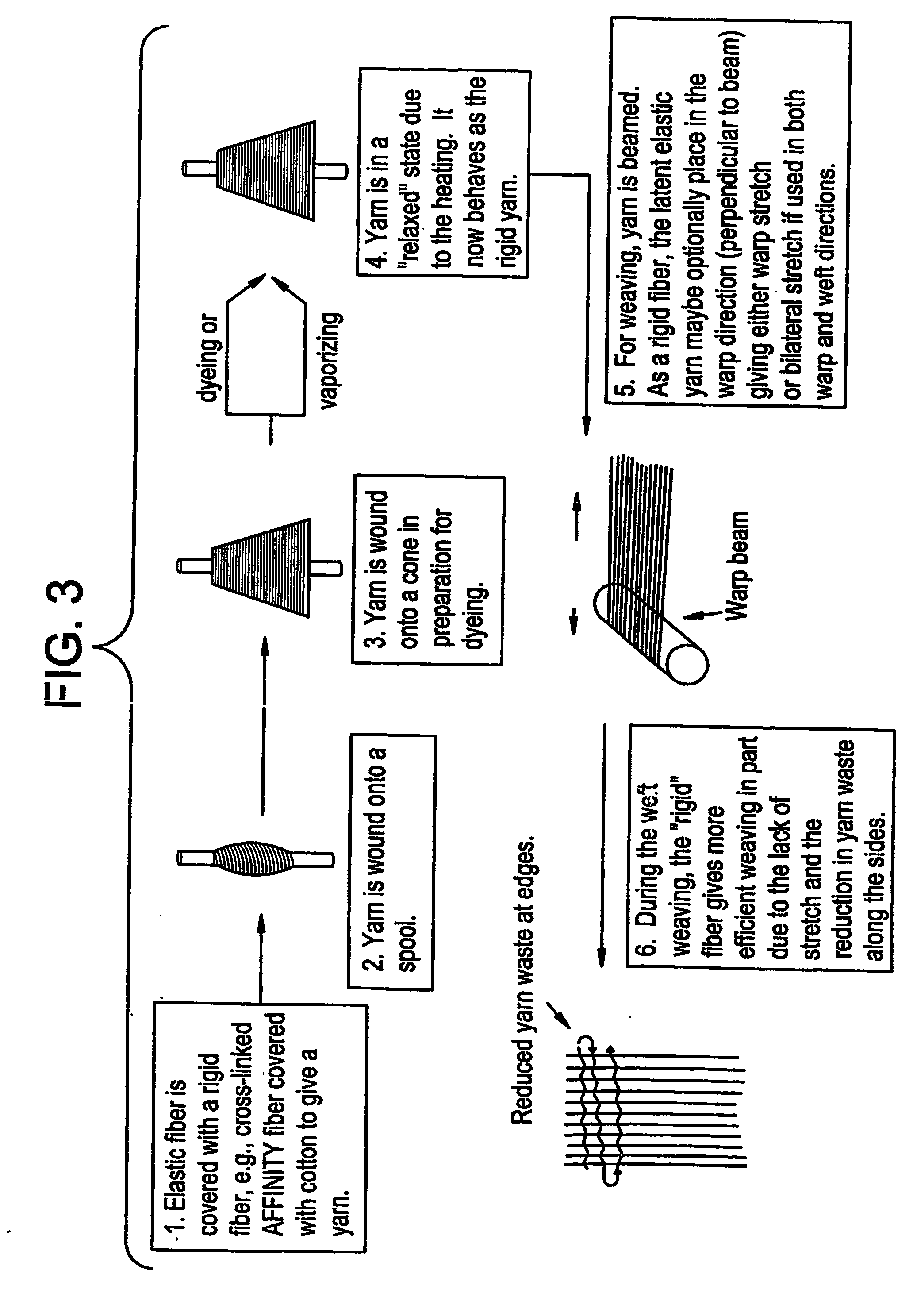Reversible, heat-set, elastic fibers, and method of making and articles made from same
a technology of elastic fibers and heat-sets, applied in the field of elastic fibers, can solve the problems of spandex posing distinct disadvantages, ozone pollution, chlorine and high temperatures, and elongation or lengthening of fibers, and achieves the effect of reducing the amount of fiber needed, less likely to stretch during winding operations, and more efficient dyeing and/or weaving processes
- Summary
- Abstract
- Description
- Claims
- Application Information
AI Technical Summary
Benefits of technology
Problems solved by technology
Method used
Image
Examples
Embodiment Construction
General Definitions
[0077]“Fiber” means a material in which the length to diameter ratio is greater than about 10. Fiber is typically classified according to its diameter. Filament fiber is generally defined as having an individual fiber diameter greater than about 15 denier, usually greater than about 30 denier. Fine denier fiber generally refers to a fiber having a diameter less than about 15 denier. Microdenier fiber is generally defined as fiber having a diameter less than about 100 microns denier.
[0078]“Filament fiber” or “monofilament fiber” means a single continuous strand of material of indefinite (i.e., not predetermined) length, as opposed to a “staple fiber” which is a discontinuous strand of material of definite length (i.e., a strand which has been cut or otherwise divided into segments of a predetermined length). “Multifilament fiber” means a fiber comprising two or more monofilaments.
[0079]“Photoinitiator” means a chemical composition that, upon exposure to UV-radi...
PUM
| Property | Measurement | Unit |
|---|---|---|
| Electric charge | aaaaa | aaaaa |
| Temperature | aaaaa | aaaaa |
| Temperature | aaaaa | aaaaa |
Abstract
Description
Claims
Application Information
 Login to View More
Login to View More - R&D
- Intellectual Property
- Life Sciences
- Materials
- Tech Scout
- Unparalleled Data Quality
- Higher Quality Content
- 60% Fewer Hallucinations
Browse by: Latest US Patents, China's latest patents, Technical Efficacy Thesaurus, Application Domain, Technology Topic, Popular Technical Reports.
© 2025 PatSnap. All rights reserved.Legal|Privacy policy|Modern Slavery Act Transparency Statement|Sitemap|About US| Contact US: help@patsnap.com



